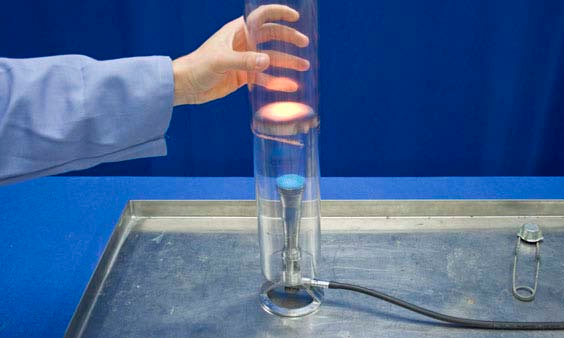


Concept
The heated wire mesh inside the tube creates a turbulent flow of hot air that is convected upward and generates a white noise acoustic spectrum. The doubly open-ended tube behaves like an organ pipe and standing waves with antinodes at each end are filtered out of the white noise spectrum. The dominant frequency is thus given by:
$$f_1 = \frac{v}{2L} $$
where $v =$ speed of sound in air = 343 m/s and $L =$ length = 0.97 m. These values give a frequency of 177 Hz and the associated loud booming will delight your students. Note that orienting the tube horizontally “turns the sound off” because hot air is no longer convected through the tube since there is no weight density gradient in the horizontal direction.
Procedure
- Light the Bunsen burner at a low flame.
- Hold a hoot tube over the flame until the metal screen gets hot enough to glow. Do not overheat the hoot tubes.
- Remove the hoot tube from the flame and hold it upright to hear a loud sustained tone.
- Notice that if you hold the hoot tube horizontally the sound stops.
- Get the two similarly sized hoot tubes sounding at the same time to produce beats.
Equipment
- (3) Hoot Tubes
- Flint Lighter
- Bunsen Burner
- Propane Bottle
- Metal Tray